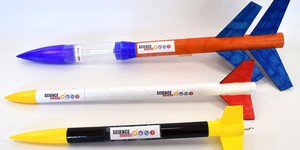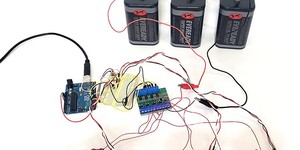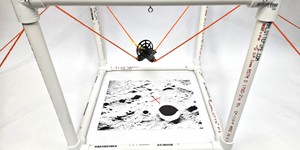Space Exploration Science Projects (55 results)
|
Select a resource
Coding Projects
Sort by
|
Build an ion wind rotor, a model of an ion thruster, using a Van de Graaff generator and experiment with different electrode designs.
Read more
Companies like SpaceX and Blue Origin are dramatically lowering the cost of space flight by designing reusable rocket boosters that land back on Earth. Getting a rocket to land vertically without any damage - and without using a parachute to slow it down - is quite a tricky physics problem! In this project you will modify your own model rocket so it can land vertically.
Read more
What does it take to launch a robot to Mars or for a satellite to explore our outer solar system? In this project you will explore the physics of a rocket as you predict its performance, launch it, and measure the actual results. This is rocket science!
Read more
A mass driver uses electromagnetics to launch projectiles. In the future, such a device could launch payloads into space without the use of chemical rockets. This could lead to long-term cost savings when launching large amounts of material into space—for example, to construct a space station. In this project you will design and build your own working model mass driver as you learn some of the engineering principles behind how mass drivers operate.
Read more
How do astronomers collect stardust? They design and build satellites that are launched into space to collect particles on specially designed panels. Satellites can be sent to orbit around an object of interest: a planet, moon, or comet. In this experiment, you can build your own mini satellite and use it to collect some pretend stellar debris. If you simulate an asteroid impact, how much stellar dust will your satellite collect? Will placing your satellite at different "orbital" distances from…
Read more
How do you practice landing a spacecraft on another planet or docking it with a space station? With a spacecraft motion simulator here on Earth! In this engineering project, you will design and build your own cable-driven spacecraft motion simulator that lets you move a model spacecraft around in three-dimensional space.
Read more
Have you ever wondered what would happen if two satellites crashed into each other in space? While space may seem empty, Earth’s orbit is actually crowded with satellites and debris. In this project, you’ll step into the role of a space engineer, using real satellite data to model orbits, track their movement, and predict potential collisions. You’ll explore how gravity and speed affect a satellite’s movement and learn how scientists use simple math and code to prevent…
Read more
You've heard of gold mining and coal mining, but think outside the box...or the planet...what about asteroid mining? Scientists, engineers, and business people believe asteroid mining is feasible, and they are in the beginning stages of long-term plans to mine asteroids for valuable resources during space missions. You don't want to miss out on all the fun; in this science project, you will come up with your own scientific plan for an asteroid mining company. We will help get you started by…
Read more
Mechanical switches are common in many machines and robots. They can be used to detect when a button is pushed, when a door is open, or a low-speed collision when two objects bump into each other. Switches can act as "bump sensors" on a simple robot to help it detect when it hits an obstacle. The robot can use this information to navigate around obstacles and avoid getting stuck. Can you build and program a robot that can drive around your house while using bump sensors to avoid obstacles?
Read more
To be able to live on Mars, humans need breathable air, clean water, and nutritious food. Spacesuits can provide oxygen to breathe, ice on Mars can be a source of water, but how could we get nutritious food? Today's astronauts bring food with them. But a manned trip to Mars would require food that was either successfully grown in space or on Mars, as taking the extra weight of food for such a long time—it takes 6–9 months one way—is just too costly. In this project, you will…
Read more
|















